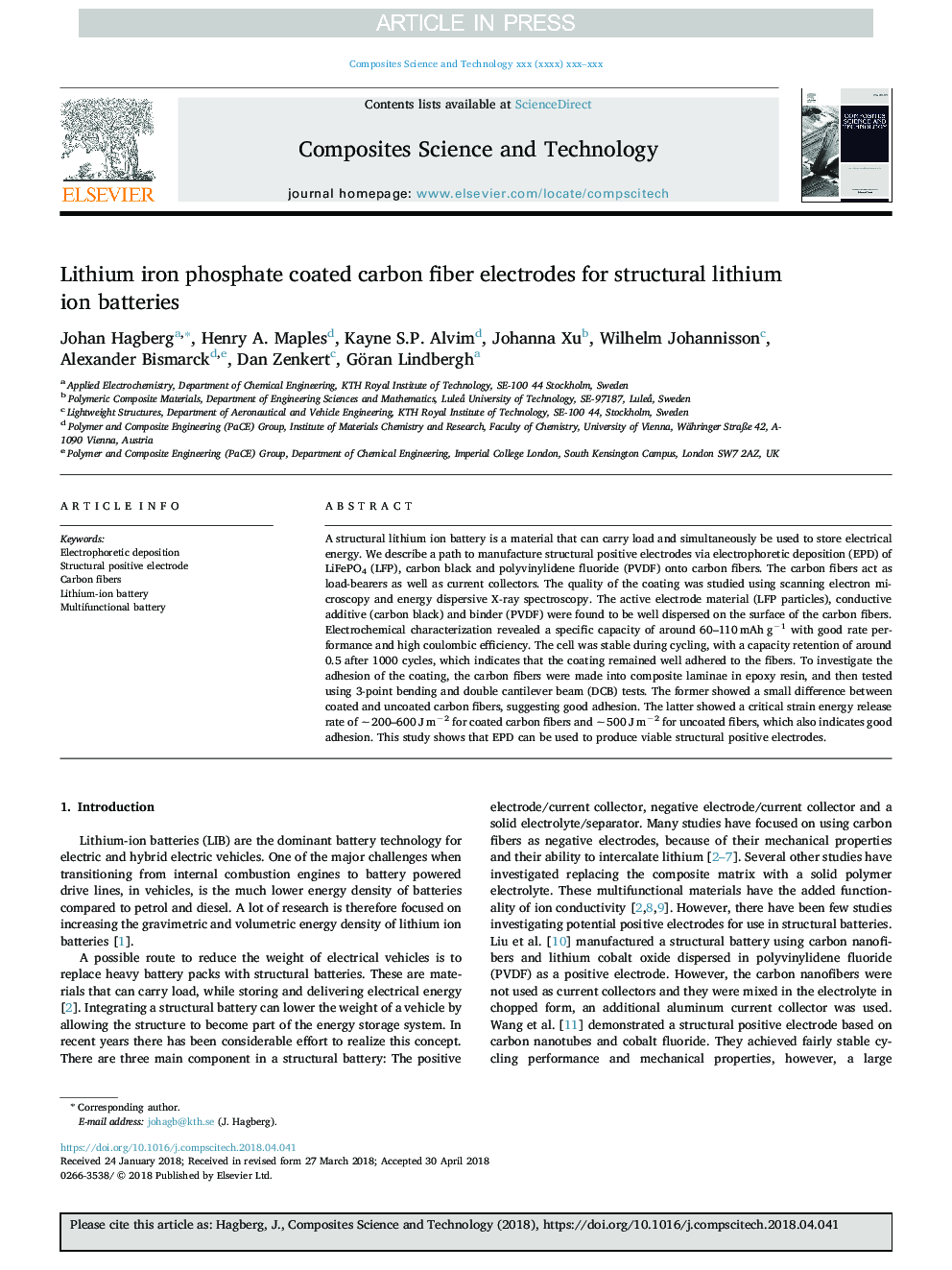| Article ID | Journal | Published Year | Pages | File Type |
|---|---|---|---|---|
| 7214419 | Composites Science and Technology | 2018 | 9 Pages |
Abstract
A structural lithium ion battery is a material that can carry load and simultaneously be used to store electrical energy. We describe a path to manufacture structural positive electrodes via electrophoretic deposition (EPD) of LiFePO4 (LFP), carbon black and polyvinylidene fluoride (PVDF) onto carbon fibers. The carbon fibers act as load-bearers as well as current collectors. The quality of the coating was studied using scanning electron microscopy and energy dispersive X-ray spectroscopy. The active electrode material (LFP particles), conductive additive (carbon black) and binder (PVDF) were found to be well dispersed on the surface of the carbon fibers. Electrochemical characterization revealed a specific capacity of around 60-110â¯mAhâ¯gâ1 with good rate performance and high coulombic efficiency. The cell was stable during cycling, with a capacity retention of around 0.5 after 1000 cycles, which indicates that the coating remained well adhered to the fibers. To investigate the adhesion of the coating, the carbon fibers were made into composite laminae in epoxy resin, and then tested using 3-point bending and double cantilever beam (DCB) tests. The former showed a small difference between coated and uncoated carbon fibers, suggesting good adhesion. The latter showed a critical strain energy release rate of â¼200-600â¯Jâ¯mâ2 for coated carbon fibers and â¼500â¯Jâ¯mâ2 for uncoated fibers, which also indicates good adhesion. This study shows that EPD can be used to produce viable structural positive electrodes.
Related Topics
Physical Sciences and Engineering
Engineering
Engineering (General)
Authors
Johan Hagberg, Henry A. Maples, Kayne S.P. Alvim, Johanna Xu, Wilhelm Johannisson, Alexander Bismarck, Dan Zenkert, Göran Lindbergh,
